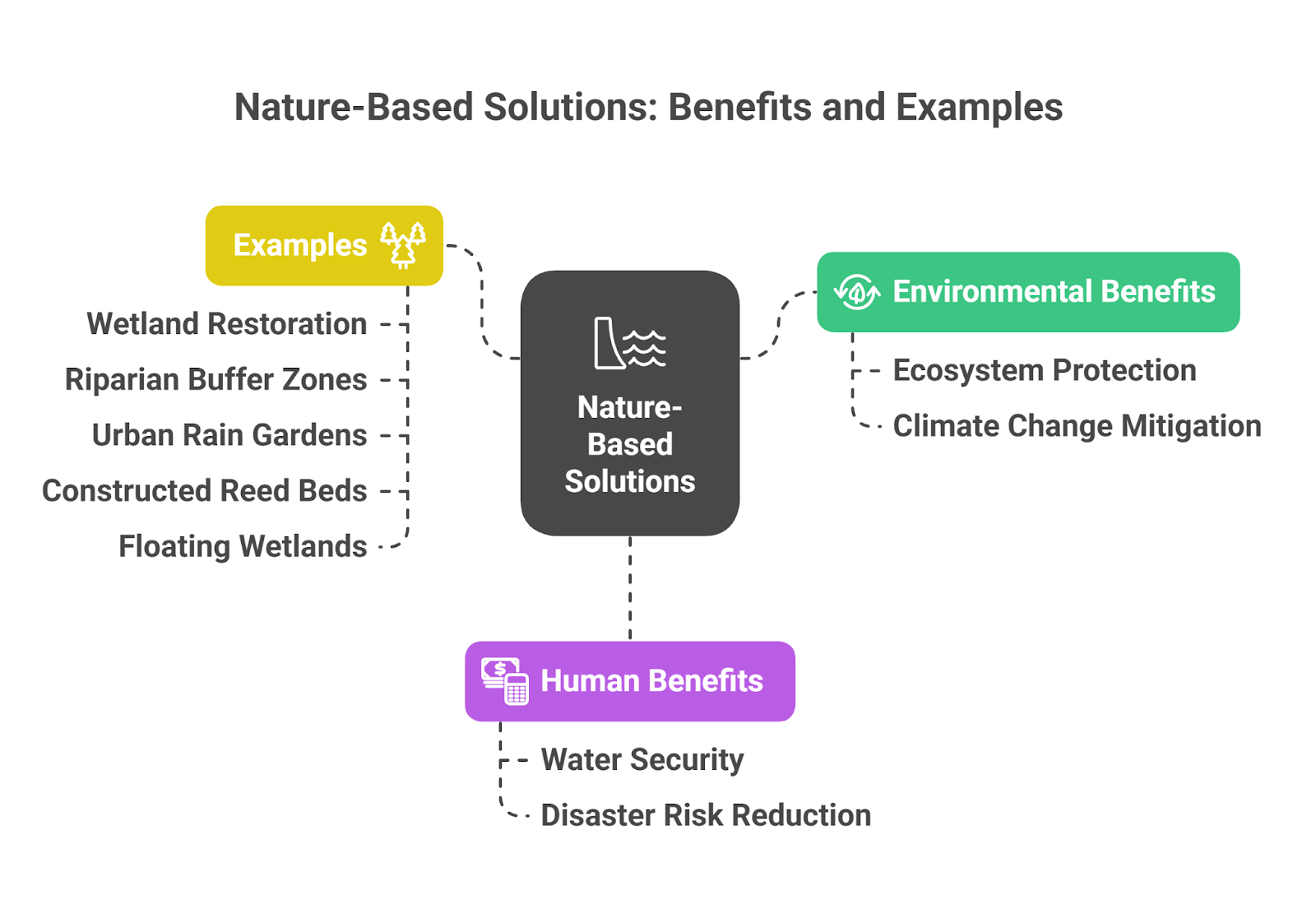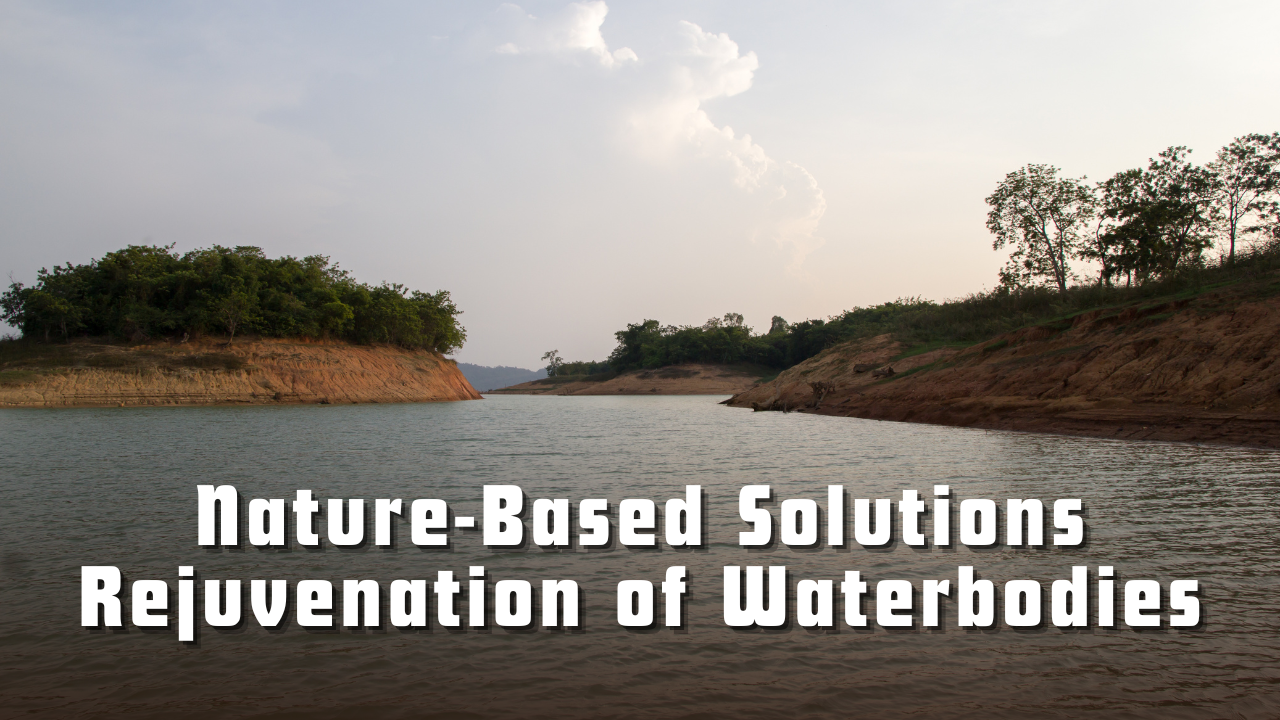Font size:
Print
Nature-Based Solutions and Rejuvenation of Waterbodies
Rejuvenating Waterbodies through Nature-Based Solutions
Context: India’s waterbodies—lakes, ponds, wetlands, and rivers—are under increasing pressure from pollution, encroachment, and climate change. Nature-based solutions (NbS) offer a powerful, sustainable way to restore these ecosystems while enhancing biodiversity and community resilience.

Why is it essential to protect local and global waterbodies?
- Ecological Role: Provide potable water, groundwater recharge, and flood control. Maintain aquatic biodiversity, fisheries, and wetland ecosystems.
- Human Security: In India, 60 crore people face high water stress (NITI Aayog report). Polluted water leads to health issues, mosquito-borne diseases, and groundwater contamination.
- Climate Linkages: Eutrophication of lakes → Methane emissions (20–30x more potent than CO₂). Healthy wetlands act as carbon sinks, mitigating climate change.
- Socio-Economic Benefits: Waterbodies historically supported agriculture, livelihoods, and cultural heritage. Degraded lakes (Bengaluru, Hyderabad, Chennai) now threaten urban sustainability.
India has over 2.4 million waterbodies, but many are critically polluted or encroached. Their protection is vital for climate resilience, public health, and economic sustainability.
How can nature-based solutions help in rejuvenating waterbodies?
- Bioremediation & Water Quality Improvement: Floating wetlands with vetiver grass, canna lily etc. absorb nitrates, phosphates, and heavy metals. Plant roots act as surfaces for microbial biofilms → breaking down organic matter, reducing BOD/COD.
- Climate Co-Benefits & Biodiversity Revival: Reduce methane emissions from algal blooms. Provide carbon sequestration, making lakes climate-positive assets. Artificial wetlands and floating islands create habitats for birds, plankton, and aquatic fauna.
- Cost-Effectiveness & Sustainability: Cheaper to install and maintain compared to conventional treatment plants. Adaptable to fluctuating water levels and climate variability.
- Community & Urban Planning Integration: Successful wetland restoration in India includes Neknampur Lake (Hyderabad), where floating wetlands cut BOD by 90%; Bengaluru’s Jakkur, Kaikondrahalli, and Puttenahalli lakes, revived through eco-restoration and community action; and Indore’s Annapurna Lake, restored using microbial cultures and solar aerators. At the national level, the AMRUT Mission promotes Nature-based Solutions (NbS) via City Water Balance Plans (CWBPs) for sustainable urban lake management.
Subscribe to our Youtube Channel for more Valuable Content – TheStudyias
Download the App to Subscribe to our Courses – Thestudyias
The Source’s Authority and Ownership of the Article is Claimed By THE STUDY IAS BY MANIKANT SINGH



